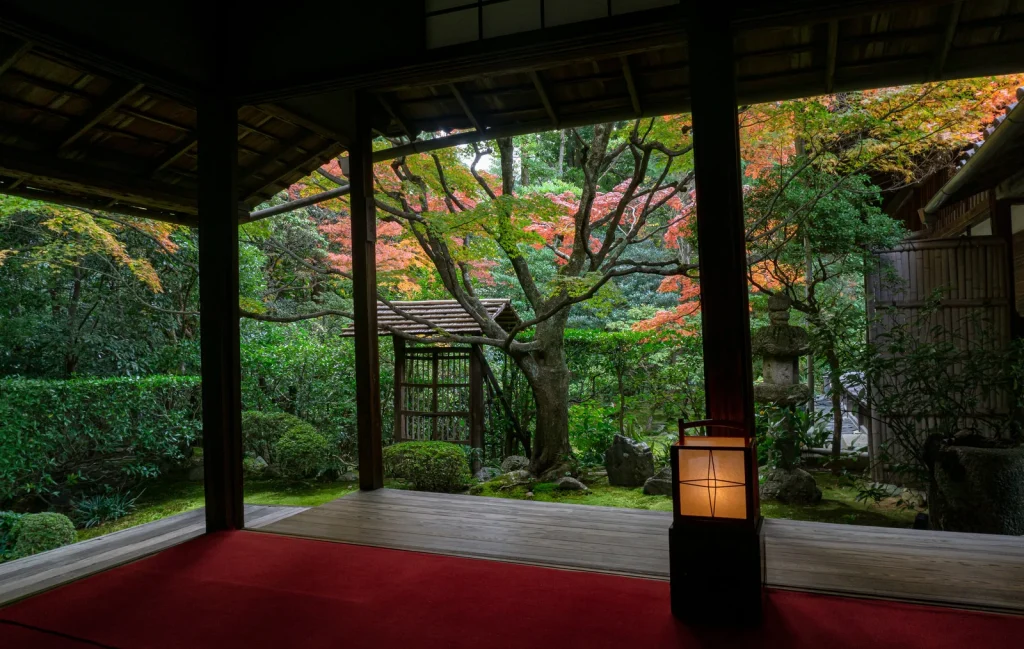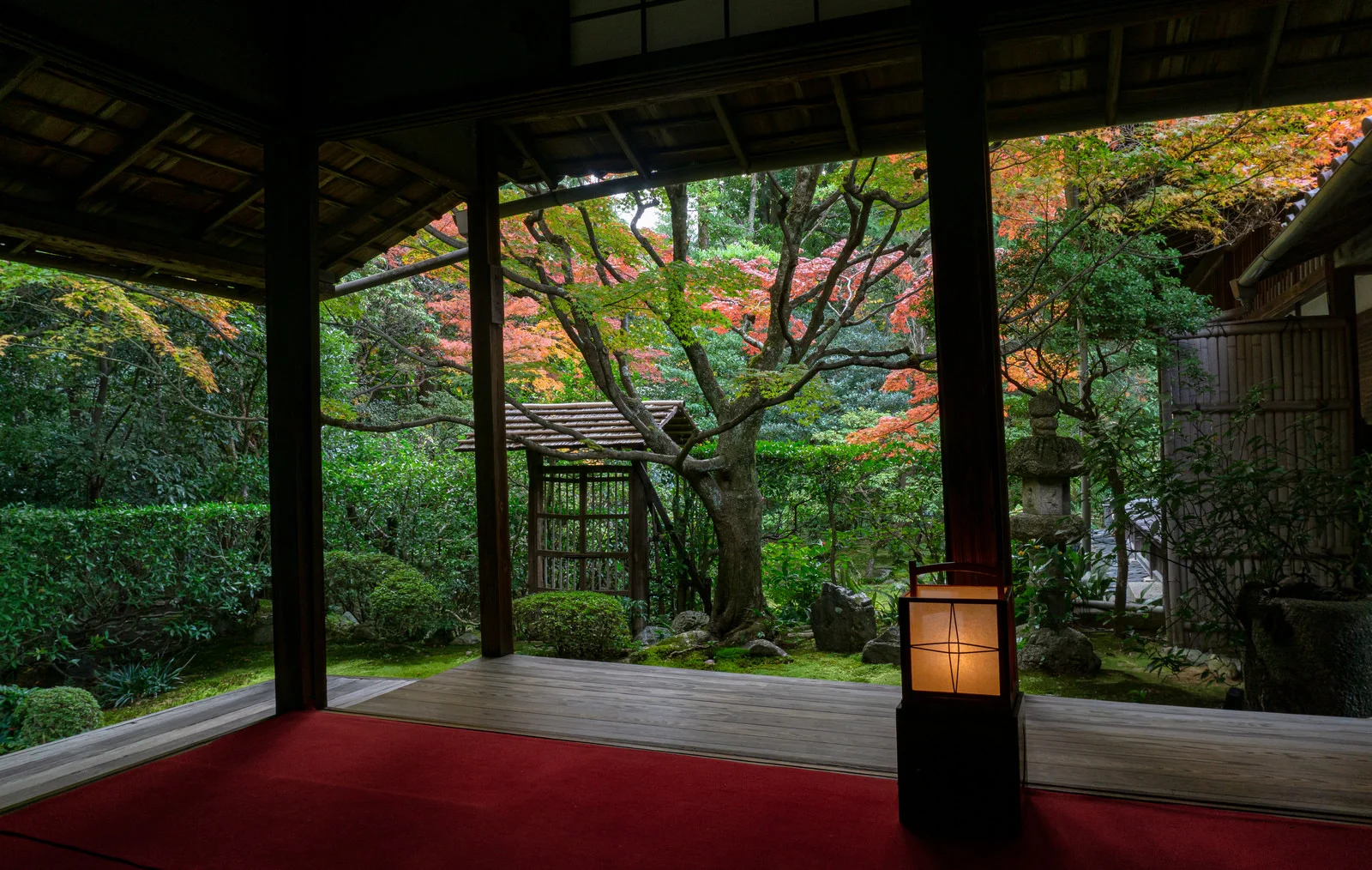Nestled in the heart of Japan, Kyoto Prefecture unfolds as a living canvas where ancient traditions, historic landmarks, and natural wonders converge.
Often referred to as the cultural capital of Japan, Kyoto is a testament to the country’s rich heritage.
Join us on a virtual journey as we explore the myriad attractions, savor local delicacies, and immerse ourselves in the enchanting ambiance that defines this cultural treasure.
Allure of Kyoto

1. Kyoto Imperial Palace: A Glimpse into Imperial History
Our odyssey begins at the Kyoto Imperial Palace, a residence once inhabited by the Imperial family until the capital moved to Tokyo. The palace, surrounded by lush gardens and protective walls, offers a glimpse into Japan’s imperial history. Wander through the meticulously designed Ninomaru Garden and experience the architectural splendor that reflects the elegance of a bygone era.
2. Fushimi Inari Taisha: Gates to the Spirit World
Embark on a spiritual journey at Fushimi Inari Taisha, an iconic Shinto shrine known for its vermillion torii gates that lead to the sacred Mount Inari. The vibrant pathway creates a mystical tunnel through the forest, where visitors can explore various sub-shrines and witness breathtaking views of Kyoto. Fushimi Inari Taisha is a symbol of prosperity, and climbing to the mountaintop is a spiritual endeavor that promises both physical and metaphysical rewards.
3. Kinkaku-ji (Golden Pavilion): A Zen Masterpiece
Marvel at the splendor of Kinkaku-ji, the Golden Pavilion, a Zen Buddhist temple adorned in gold leaf. Reflecting in the Mirror Pond, Kinkaku-ji emanates an ethereal glow, creating a harmonious balance between architecture and nature. Explore the meticulously landscaped gardens surrounding the pavilion, and witness the changing hues with the seasons, making each visit a unique visual experience.
4. Arashiyama Bamboo Grove: Nature’s Cathedral
Step into the enchanting Arashiyama Bamboo Grove, where towering bamboo stalks create a natural cathedral. The sound of rustling bamboo leaves and sunlight filtering through the dense grove offer a serene escape. Take a stroll through the grove to discover hidden pathways leading to the enchanting Okochi Sanso Villa and the iconic Togetsukyo Bridge, which spans the picturesque Hozugawa River.
5. Gion District: Kyoto’s Geisha Haven
Immerse yourself in the traditional charm of the Gion District, Kyoto’s historic entertainment quarter. Known for its preserved machiya houses and teahouses, Gion is synonymous with the world of geisha. Wander through the narrow cobblestone streets, catch glimpses of beautifully adorned geiko and maiko, and experience the timeless allure of Kyoto’s geisha culture.
6. Nijo Castle: Elegance and Intrigue
Explore the historic Nijo Castle, a UNESCO World Heritage site that served as the residence of the Tokugawa shoguns. The castle complex includes beautiful gardens, a grand palace, and “nightingale floors” designed to chirp like birds when walked upon, alerting residents to potential intruders. Nijo Castle is a masterpiece of architecture and a fascinating journey into Japan’s feudal past.
7. Kyoto National Museum: Preserving Cultural Treasures
Delve into the artistic treasures of Kyoto at the Kyoto National Museum, which houses a vast collection of traditional and contemporary Japanese art. The museum showcases paintings, sculptures, ceramics, and textiles that provide insights into the country’s cultural evolution. Special exhibitions and cultural events further enhance the museum’s role in preserving and promoting Japan’s artistic heritage.
8. Kyoto Botanical Gardens: Tranquil Oasis of Biodiversity
Escape to the Kyoto Botanical Gardens, a tranquil oasis boasting diverse flora from Japan and around the world. Stroll through themed gardens, including a bamboo grove, cherry blossom area, and a traditional tea garden. The botanical gardens offer a serene retreat for nature enthusiasts and provide a platform for educational programs on biodiversity and conservation.
9. Kyoto International Manga Museum: Where Art Meets Imagination
Celebrate the intersection of art and imagination at the Kyoto International Manga Museum, a haven for manga enthusiasts. The museum houses over 300,000 manga collected from around the world, allowing visitors to freely peruse the shelves and immerse themselves in the diverse world of manga. With its open-bookshelf concept, the museum blurs the line between a library and an interactive art space.
10. Kiyomizu-dera: The Pure Water Temple
Visit the iconic Kiyomizu-dera, a wooden terrace perched on the hills overlooking Kyoto. The temple’s name, meaning “pure water,” is derived from the Otowa Waterfall, where visitors can drink from three streams, each believed to bestow a different benefit. The panoramic views of Kyoto from the terrace, especially during cherry blossom season, make Kiyomizu-dera a quintessential Kyoto experience.
11. Kyoto Handicraft Center: Artisanal Treasures
Indulge in Kyoto’s rich tradition of craftsmanship at the Kyoto Handicraft Center. The center showcases a diverse array of handmade crafts, including traditional textiles, ceramics, and lacquerware. Visitors can witness live demonstrations by skilled artisans, purchase unique souvenirs, and gain insights into the meticulous artistry that defines Kyoto’s artisanal heritage.
12. Kyoto Railway Museum: Journey Through Japan’s Rail History
Embark on a journey through Japan’s rail history at the Kyoto Railway Museum. The museum houses an extensive collection of trains, from steam locomotives to modern shinkansen. Visitors can explore interactive exhibits, step inside retired train cars, and even simulate driving a train. The museum offers a nostalgic and educational experience, highlighting the integral role of railways in Japan’s development.
13. Nishiki Market: Culinary Exploration
Delight your taste buds at Nishiki Market, a bustling culinary paradise known as Kyoto’s Kitchen. Explore the narrow alleys lined with stalls offering fresh seafood, pickles, sweets, and local specialties. Sample yuba (tofu skin), Kyoto-style pickles, and matcha-flavored treats. Nishiki Market is a gastronomic adventure that reflects Kyoto’s dedication to preserving culinary traditions.
14. Kyoto Studio Park: Step into Edo Period Japan
Travel back in time at Kyoto Studio Park, an Edo-period-themed amusement park that recreates the ambiance of historical Japan. The park features traditional buildings, samurai shows, and opportunities for visitors to dress in period costumes. Experience the magic of Japan’s past while exploring the film sets and enjoying theatrical performances that bring the Edo era to life.
15. Sennyu-ji Temple: Serenity Amidst Cherry Blossoms
Discover tranquility at Sennyu-ji Temple, nestled away from the bustling city. Known for its beautiful cherry blossoms in spring, the temple grounds provide a peaceful escape. Explore the Hojo Garden, adorned with seasonal flowers, and visit the Gokoden Hall, housing the mausoleum of Emperor Shijo. Sennyu-ji is a hidden gem where visitors can experience the serenity of a traditional Japanese temple.
16. Kyoto Prefectural Domoto-Insho Museum of Fine Arts: Modern Art Haven
Immerse yourself in modern art at the Kyoto Prefectural Domoto-Insho Museum of Fine Arts. The museum showcases works by modern Japanese artists, particularly those associated with the Kyoto Art Association. With a focus on Nihonga (Japanese-style painting), the museum provides a contemporary perspective on Kyoto’s artistic landscape, offering a blend of tradition and innovation.
17. Higashiyama Hanatouro: Illuminated Beauty at Night
Experience the enchanting Higashiyama Hanatouro, an annual event where historic streets in the Higashiyama district are illuminated with thousands of lanterns. The soft glow enhances the charm of traditional machiya houses, temples, and shrines, creating a magical atmosphere. Nighttime strolls during Higashiyama Hanatouro offer a unique perspective on Kyoto’s architectural beauty.
18. Eikan-do Zenrin-ji: Autumn’s Palette of Colors
Witness the breathtaking beauty of autumn at Eikan-do Zenrin-ji, a Buddhist temple known for its vibrant fall foliage. The temple’s extensive gardens, with moss-covered paths and reflective ponds, create a picturesque setting. The fiery hues of maple trees during the autumn season make Eikan-do a popular destination for koyo (fall foliage) viewing in Kyoto.
19. Ryoan-ji: Zen Rock Garden Serenity
Experience the tranquility of Zen philosophy at Ryoan-ji, a Zen temple renowned for its rock garden. The simplicity of the meticulously arranged rocks and gravel is a meditation in itself. The temple’s grounds also feature a beautiful pond, a tea house, and a traditional garden, creating a serene environment that invites contemplation.
20. Uji: The Birthplace of Matcha
Embark on a journey to Uji, the birthplace of matcha (green tea) and a picturesque town along the Uji River. Visit historical tea houses, explore Byodoin Temple with its iconic Phoenix Hall, and savor matcha-flavored delights. Uji’s lush tea fields and the delicate flavors of its matcha products offer a sensory experience that embodies Kyoto’s tea culture.
21. Ohara: Rural Tranquility and Temples
Escape to the rural tranquility of Ohara, a mountainous area north of Kyoto known for its serene temples and lush landscapes. Explore Sanzen-in Temple, surrounded by moss-covered gardens and seasonal blooms. Ohara offers a peaceful retreat away from the urban bustle, allowing visitors to connect with nature and traditional Japanese aesthetics.
22. Kamigamo Shrine: UNESCO-Recognized Sacred Grounds
Visit Kamigamo Shrine, one of Kyoto’s oldest Shinto shrines and a UNESCO World Heritage site. The shrine, nestled in a forested area, is known for its unique architectural style and annual Aoi Matsuri festival. Kamigamo Shrine’s sacred grounds provide a spiritual sanctuary, inviting visitors to partake in rituals and appreciate the connection between nature and divinity.
23. Katsura Imperial Villa: Architectural Harmony
Step into the architectural masterpiece of Katsura Imperial Villa, renowned for its meticulous garden design and traditional tea houses. The villa’s elegant layout, reflecting the aesthetics of the Edo period, showcases the harmony between architecture and nature. Guided tours offer insights into the cultural significance of Katsura Imperial Villa, making it a must-visit for enthusiasts of Japanese aesthetics.
24. Hozugawa River Boat Ride: Scenic Water Adventure
Embark on a scenic boat ride along the Hozugawa River, where traditional wooden boats navigate the gentle currents amidst lush landscapes. The journey, which dates back centuries, allows visitors to appreciate the natural beauty of Kyoto’s outskirts. The boat ride is a leisurely adventure that provides a different perspective on the region’s topography.
25. Kitano Tenmangu Shrine: Plum Blossom Paradise
Explore the beauty of plum blossoms at Kitano Tenmangu Shrine, dedicated to Sugawara no Michizane, a scholar and deity associated with learning. The shrine’s plum orchard bursts into bloom during the early spring, creating a mesmerizing spectacle. The Plum Blossom Festival attracts visitors who come to appreciate the vibrant colors and delicate fragrance of these early spring blooms.
Conclusion:
In concluding our exploration of Kyoto Prefecture, it becomes evident that this cultural haven encapsulates the essence of Japan’s timeless elegance.
From the golden reflections of Kinkaku-ji to the vibrant cultural performances, Kyoto’s allure lies in its ability to seamlessly blend the old and the new.
As we bid farewell to the picturesque landscapes, historic temples, and savory delights, Kyoto leaves an indelible imprint on our hearts.
The prefecture stands as a sanctuary where traditions breathe, nature whispers, and every stone holds a story.
In the heart of Japan, Kyoto remains not just a destination but a living canvas that invites travelers to paint their own memories, perpetuating the legacy of this cultural odyssey.



コメント